The weather outside is frightful, but the upcoming tech trends are so delightful that no one can resist reading another article about what awaits us in 2024 and beyond. We completely understand that urge. Therefore, today, we’ll share 10 (plus a bonus one) tech trends worth your attention.
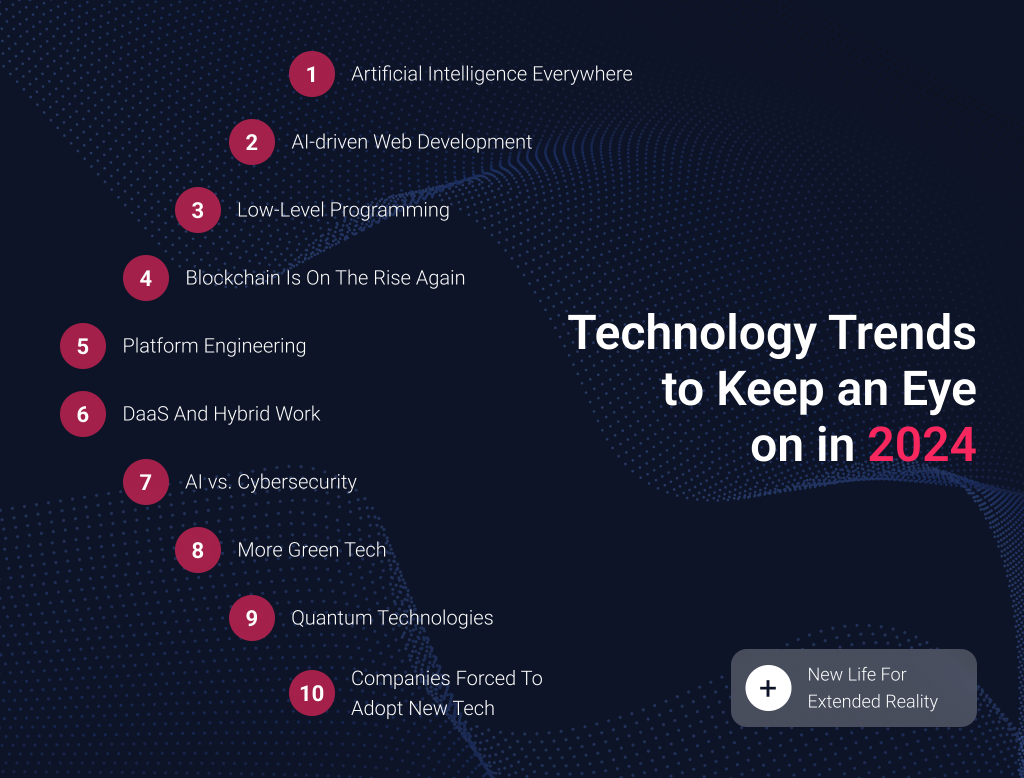
1. Artificial Intelligence Everywhere
The AI software market’s global annual revenue is currently over $50 billion, and the market is expanding at a CAGR of 38.1% between 2022 to 2030:
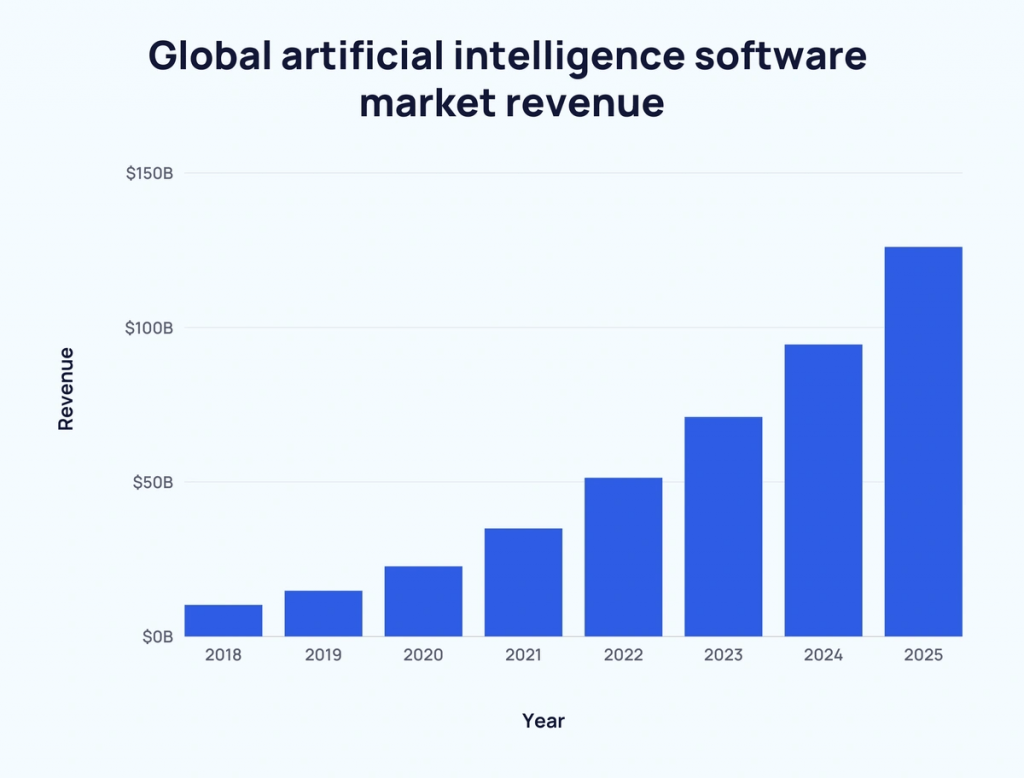
Source: 57 NEW AI Statistics (Dec 2023)
ChatGPT was released in November 2022, which means it’s slightly older than one year, which seems kinda weird because of a strange feeling that it was around for ages. Possibly, that’s because numerous businesses, large and small, consider it their duty to integrate AI systems into the services they provide, not to mention startups.
Read Also How Adaptive AI Takes the Interaction Between Business and Customers to a New Level
It goes without saying that IT industry giants joined the race for the attention of AI enthusiasts all around the world. Somehow, Google lagged in this race, leading to consequences that no analyst could predict: people started using Bing.
Bing chat, a chat mode of Microsoft Bing that uses a customized version of OpenAI’s GPT-4 model, was launched on February 7, 2023, as a built-in feature for Microsoft Bing and Microsoft Edge. Later, it became available via Skype. According to Microsoft, they have crossed 100 million daily active users of Bing after the first post-launch month.
Later, Google launched Bard, a conversational AI chatbot powered by Google’s PaLM 2 model. It was announced on February 6, 2023, but was only released to the public in a limited capacity on March 21, 2023. The search giant didn’t stop there. It also presented its new Large Language Model (LLM), called Gemini, a multimodal model developed by Google DeepMind.
Gemini can handle text, images, audio, and video and perform various tasks, such as image captioning, speech recognition, video summarization, and more. According to the breathtaking presentation video, Gemini was able, for example, to recognize a drawn duck, distinguish it from a toy duck, and make a joke about it:

As it was found out later, the video was edited and did not involve an actual spoken prompt. However, there are a few doubts that Google has enough brain power to implement such an LLM. The company also announced it will integrate Gemini into its Pixel 8 Pro smartphones, making it the first smartphone with AI built in.
It makes AI tools something more significant than a website where you can ask how to sort an array in JavaScript. It becomes an ecosystem changing how you search for information, work with a virtual assistant, take photos, and more. There’s also Copilot for the Microsoft Office that was released this year. It can help users write papers and do spreadsheets, which means the way we work with documentation will also change in the upcoming years.
What was really interesting to watch in 2023 is generative image AI. In 2021, OpenAI released DALL.E 1, which could only generate photos of people that bear little resemblance to reality. This year brought us Aitana López, an AI-generated model who earns $10,000 per month:

It’s not clear which exact set of AI tools were used. What we can say for sure is that this precedent did not go unnoticed by many agencies looking for ways to advertise for smaller budgets effectively. In 2024, we’ll probably see more such cases.
But wait, there’s more. In November, 24 Stable Video Diffusion was announced. It allows the generation of short videos based on user inputs. If developers will be active, there’s a chance that by the end of 2024, it may allow people to generate somewhat watchable full-length movies. Have you ever wanted to film your own superhero movies? Now, there is hope.
That’s how AI penetrates all areas of our lives, and soon, we will no longer be able to distinguish what was made by a human and what by a machine. For instance, this entire section of the article was generated by an AI system. Or not. Sometimes you really can’t tell.
2023 Milestones and Inventions:
- Microsoft invested $10 billion in a multiyear deal with OpenAI;
- Start-ups, such as Anthropic and AI21, build and train their own LLMs;
- Google developed a new LLM called PaLM 2, which provides its Bard chatbot;
- Google developed Gemini, a family of multimodal LLMs;
- OpenAI released GPT-4, demonstrating a significant advancement over its predecessors;
- OpenAI released DALL-E 3, the new and improved version of the AI image generator;
- Adobe added Generative Expand and Generative Fill into Photoshop, allowing users to create and edit images with generative AI;
- Meta released SeamlessM4T, a multilingual and multimodal AI model that can translate speech and text for up to 100 languages.
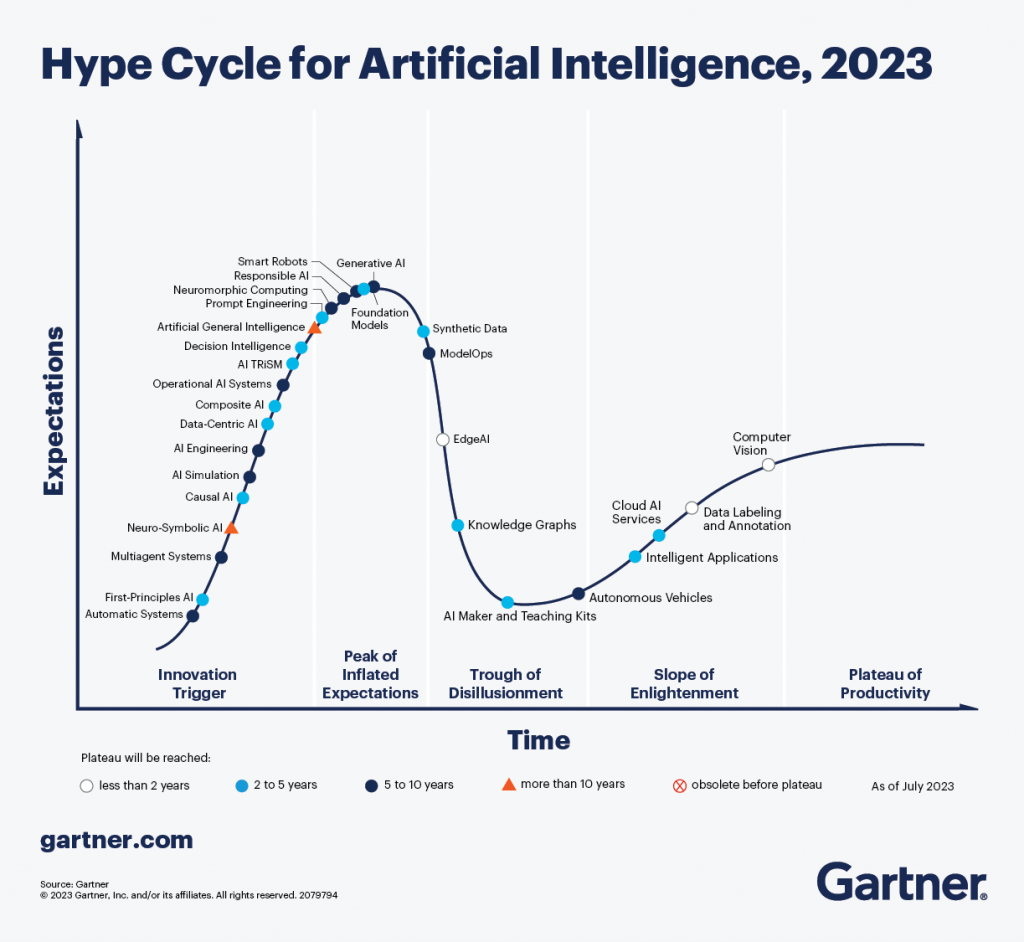
Source: What’s New in Artificial Intelligence from the 2023 Gartner Hype Cycle
2. Web Development. 200,000 AI Tools Are Ready, with a Million More Well on the Way
Let’s leave the question, “Do we really need yet another JavaScript framework?” out of discussion for a moment. Maybe there’s more than enough, and the focus will shift from “Who will build a new React?” to “Who will build the best development tools for frameworks we already have?” Lately, we have seen visual editors and IDEs for many popular frameworks. They allow developers to drag and drop components on the page instead of writing the code themselves. The next frontier is to make AI write most of the code itself, and there are some tools with great potential.
Say there’s Visual Copilot that allows you to build a UI for the web app in Figma and then convert it into the code of a specific framework. Currently, it supports conversion in React, Vue, Svelte, Angular, Qwik, Solid, or HTML code.
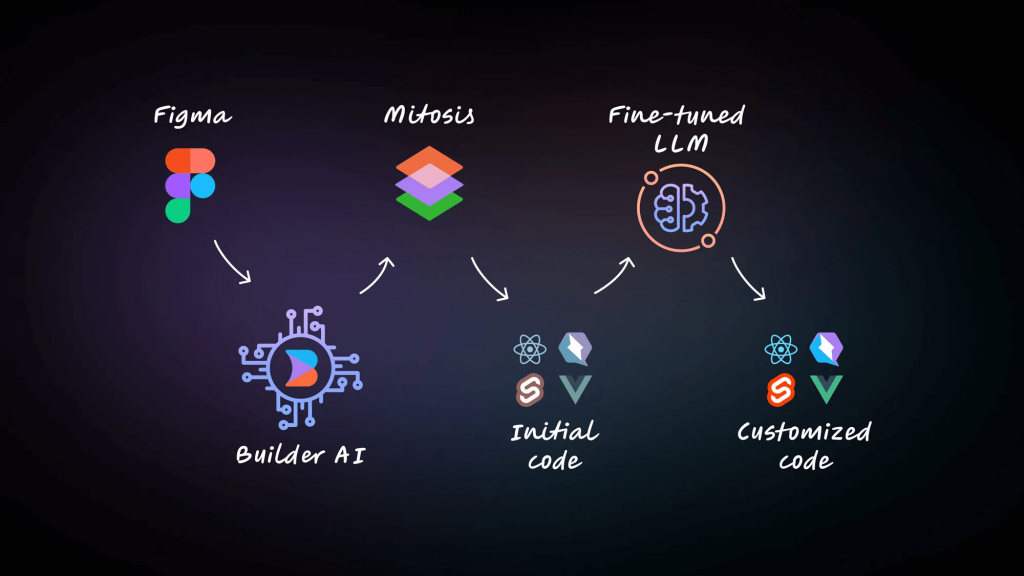
Source Introducing Visual Copilot: A Better Figma-to-Code Workflow
The next step will probably be developing specialized tool sets tailored to suit a specific framework with AI tuned to write the best possible and accurate code. The framework development team implementing such a feature will become the king of the hill for years, especially considering that according to some reports, ChatGPT may become “lazy” sometimes, refusing to do some tasks or returning simplified results. Imagine facing such a “rise of the machines” right before your deadline. Relying on some kind of native React-AI-Generator implemented by developers who know everything about their framework could become a preferable option.
Read Also Clash of the Libraries. Building a Data Dashboard with React, Vue.js, and Webix
3. Low-Level Programming Languages. There’s Some New Stuff Too
With web development attracting all the attention in the universe, some people may have missed exciting trends in low-level systems languages. Rust appeared eight years ago, and now there’s Rust code in the Linux kernel. Currently, only a few in-tree drivers and modules are written in this programming language, such as the binderfs driver, the binder IPC driver, and the rust_example module. However, it’s a significant step for a pretty conservative operating system that runs on many web servers and top 10 supercomputers from the 62nd TOP500, published in November 2023. Also, Rust is the most admired language, according to a Stack Overflow 2023 survey. More than 80% of developers that use it want to use it again next year:

Source: Stack Overflow 2023 Developers Survey
Among other low-level programming languages to watch in 2024, we can note Zig, the language on which the JavaScript Bun runtime is written. Also, there’s a newcomer called Mojo, a Python superset released in 2023. It can handle low-level memory management, making it a highly performant technology that can become a decent choice for AI and ML development.
Read Also What Is a Tech Stack and How to Choose the Right One for Web Application Development
4. Blockchain. Brace Yourself, the Crypto Spring Is Coming
First, there’s some good news for crypto investors. The Bitcoin price jumped from $16K at the beginning of the year to $42K at the end. Forbes predicts it will likely top $60,000 in 2024, meaning the crypto winter is finally over, and the new crypto boom looms on the horizon.
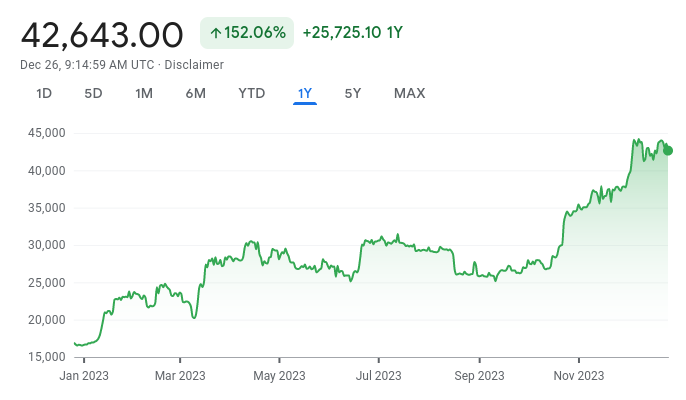
Blockchain technology as a whole is set to extend its influence beyond cryptocurrencies, with applications emerging in diverse fields such as supply chain management, secure voting systems, and decentralized finance (DeFi).
Utilizing smart contracts, integral to blockchain, will automate various processes, including legal agreements and real estate transactions. The versatility of blockchain technology underscores its potential to revolutionize multiple industries by enhancing transparency, security, and efficiency.
Blockchain advancement increases with enterprise adoption. In 2024, more institutions will embrace cryptocurrencies and blockchain solutions to improve transaction security, transparency, and efficiency. Bitcoin spot ETFs, non-custodial exchanges, and tokenizing real-world assets are examples of how blockchain can transform the financial landscape.
Read Also Simple Guide to Building Your Own Cryptocurrency Exchange or What You Should Pay Attention To
5. Platform Engineering. Hot Topic Within the DevOps Community
In the coming years, platform engineering is set to be a prominent trend. It’s focused on modernizing enterprise software delivery and involves a dedicated product team establishing and managing an engineering platform. The platform’s purpose is to cater to the requirements of software developers and other stakeholders by offering reusable tools, capabilities, and interfacing with intricate infrastructure.
Predictions say that by 2026, 80% of software engineering organizations will establish internal platform teams. These teams will provide reusable services, components, and tools for application delivery. Well-designed platforms offer users a seamless self-service experience, minimizing overhead and enabling valuable work.
Proper platform engineering brings multiple benefits, including reducing cognitive load, enhancing developer experience and productivity, and providing advanced self-service options for users.
6. DaaS. Be Where Your Employees Are
CEOs were struggling to bring everybody back to the offices after the covid-era ended. However, remote and hybrid work are here to stay. The Remote Work Statistics from Forbes show that 98% of workers want to work remotely at least some of the time, 16% of companies operate fully remote, and 28.2% work a hybrid model. Also, by 2025, 32.6 million Americans will work remote.
Therefore, companies must support work-from-anywhere scenarios. Challenges include cost optimization, robust security, and productivity for dispersed teams. Despite advancements in end-user computing tools, companies seek cost efficiency and streamlined administration. Desktop-as-a-service (DaaS) emerges as an appealing model, with Gartner predicting revenue growth from $2.4 billion in 2022 to $3.2 billion in 2024.
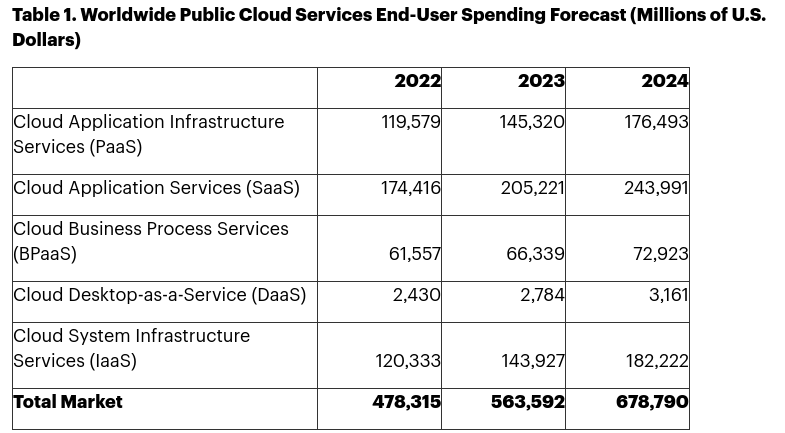
Source: Gartner Forecasts Worldwide Public Cloud End-User Spending to Reach $679 Billion in 2024
DaaS platforms provide users with a complete desktop experience, allowing them to run services and applications. The main difference between them and more SaaS applications is that DaaS provides a complete desktop environment, whereas SaaS provides specific software applications. DaaS is useful for users who need a consistent and secure desktop experience across different devices. SaaS, in its turn, is useful for those who need access to web-based software without worrying about installation or updates. DaaS platforms, equipped with digital employee experience tools, leverage data-driven insights, like employee sentiment, to further improve user experiences.
Read Also IaaS vs PaaS vs SaaS: Three Options — One Solution or How to Choose Between the Alternatives
7. Cyber Security Powered by AI, Convergence of OT and IT
In 2024, cybersecurity remains a top concern for CIOs as companies face heightened vulnerability to ransomware attacks and data breaches. AI and ransomware-as-a-service enable more sophisticated cyber threats, exploiting the expanded attack surface created by remote work, mobilized processes, and IoT devices.
The convergence of operational technology (OT) and IT is a notable trend, necessitating a holistic approach to safeguarding physical and digital assets. Continuous Threat Exposure Management (CTEM) offers a systematic cybersecurity optimization strategy, balancing diagnosis and action. With the evolving threat landscape, AI-driven advanced tools and quantum-resistant cryptography are emerging.
8. Green Tech
In 2024, major tech companies will increasingly adopt Green Tech initiatives, exemplified by Apple’s goal of achieving 100% carbon neutrality by 2030 and Google’s plan to make its facilities carbon-free by the same year.
CEOs’ concerns about the future of their businesses are driving a shift towards green technologies, supported by the fact that 75% of consumers prefer companies engaged in climate change efforts. It not only improves brand image but also fosters customer loyalty.
Technology is vital in promoting sustainability, with AI-powered smart grids, blockchain-enabled supply chains, and specific innovations like GreenWave Reality and IBM Food Trust. Balancing technological advancements with eco-friendly practices is deemed crucial, as tech companies committed to sustainability contribute to a greener future and gain the trust of environmentally conscious consumers.
2023 Milestones and Inventions:
- Navtek Naval Technologies introduced ZEEtug, the world’s first all-electric, zero-emission, rechargeable harbor tugboat;
- The Monarch Tractor company introduced MK-V, the world’s first fully-electric, self-driving tractor;
- Form Energy’s batteries take in oxygen to convert iron to rust, harnessing the resulting electrons and their energy.
Read Also Top 7 Life-Changing Trends in Energy & Utilities Industry
9. Quantum Technologies. Let’s Pretend We Know How They Work and Reap All the Benefits
In 2024, quantum computing is poised to deliver tangible benefits as it harnesses the peculiar principles of quantum physics, such as superposition and entanglement. Unlike traditional computers, quantum computers operate with quantum bits (qubits), capable of existing in multiple states simultaneously. Initial investors in quantum technology, particularly in the financial sector, aim to amplify AI systems for fraud detection and risk management applications. The global quantum technology market size is predicted to grow to around $4312.09 million by 2030 with a compound annual growth rate (CAGR) of roughly 22.06% between 2023 and 2030:
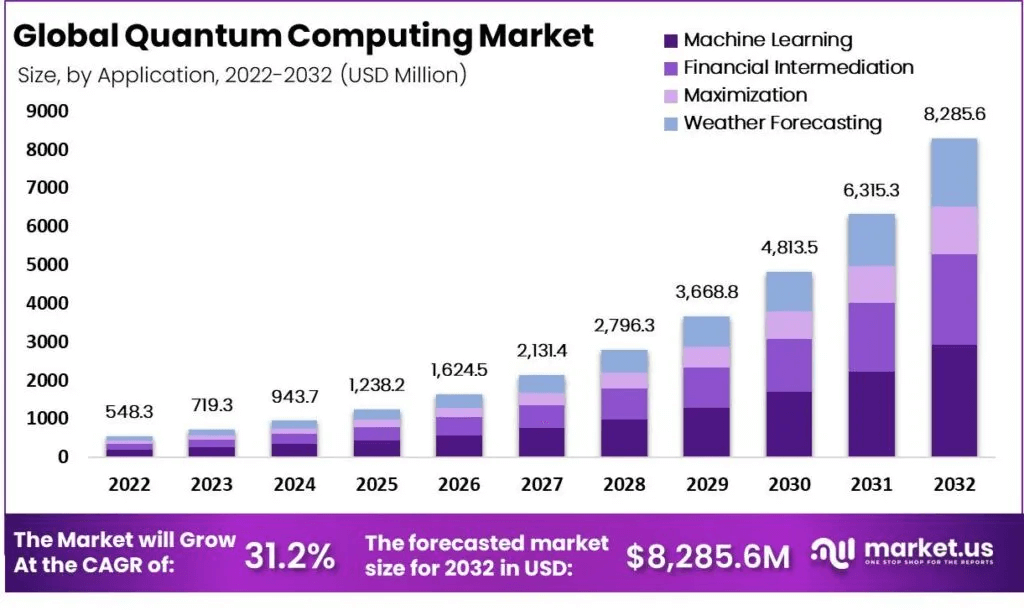 Source: Market.us – Quantum Computing Market Report
Source: Market.us – Quantum Computing Market Report
Quantum computing’s impact is expanding beyond finance, with anticipated benefits in drug discovery, genome sequencing, cryptography, meteorology, traffic flow optimization, and material science. For example, IBM recently worked with Boeing to explore how to use quantum computing to engineer stronger but lighter materials and find new ways to prevent corrosion. Quantum computing’s advantages extend to diverse fields, including cybersecurity, and as it progresses, efforts will focus on addressing error correction and practical problem-solving.
2023 Milestones and Inventions:
- Researchers at Argonne National Laboratory reported a significant advance in quantum computing. They prolonged the coherence time of their single-electron qubit to an impressive 0.1 milliseconds;
- MIT Technology Review published an article that summarized the main trends and challenges for quantum computing in 2023 and beyond. The article highlighted the shift from single quantum chips to modular quantum computers;
- Researchers at IBM demonstrated the creation of long-lived qubits, which are essential for maintaining the integrity of quantum information and enabling the execution of long-running quantum algorithms.
Read Also Quantum Computing: Today’s Glimpse into Tomorrow’s Computational Frontier
10. Companies Will be Forced to Embrace New Tech
In 2024, the momentum of digital transformation will intensify, focusing on operational efficiency, customer satisfaction, and competitive differentiation. The AI arms race sparked in 2023, has led companies to prioritize reskilling efforts. As IBM has formulated in its 5 trends for 2024, “People who use AI will replace people who don’t.”
The workforce’s digital literacy will become crucial, driven by the demand for understanding new technologies. Recognizing the value of a digitally literate workforce, companies aim to maximize technology investments. Tech literacy has risen to a CEO- and board-level concern, emphasizing the need to equip employees with essential tech skills for optimal performance.
Bonus Prediction. Extended Reality Will Rise Again
Once forgotten, Extended Reality (it’s a professional term for Augmented Reality and Virtual Reality) might return in 2024. The primary driver for attracting attention to this tech is Apple Vision Pro, a breathtaking (and a bit weird-looking) device for a breathtaking price of $3,499:

It’ll be released in 2024, and Apple is known for previously releasing some revolutionary tech stuff. We know that AR/VR is not a new technology, but Apple isn’t a company bringing ideas nobody ever thought of to the table. They didn’t invent an operating system with a graphical user interface (GUI) or decide that phones must suddenly become smart. It always was about finding the best possible way to embody such ideas.
That’s why there’s a chance that the release of these goggles can bring some new opportunities for app developers and light a spark in the seemingly frozen AR/VR industry. But it’s always important to remember that the general public will be less likely to run into an Apple store to spend $3K+ for such a niche device. There’s always a chance that it’ll remain an expensive business toy and will not ignite the desire to release competing solutions in other market players, thereby giving a new, unexpected round of technological development. Therefore, we give this one a 50/50 chance.
2023 Milestones and Inventions:
- Declines in investment and consumer adoption of VR and AR;
- New devices continue to appear, for example, PlayStation VR2 and HTCVive XR Elite headsets;
- Apple announced the 2024 Vision Pro release.
Conclusions
One way or another, AI embraces almost every trend that will excite the public’s minds in 2024. First, generative AI is available to nearly everyone, which will revolutionize various industries, from enhancing workspace collaboration to creating more personalized digital experiences. Second, there are AI tools for specialists, for example, in cybersecurity, that will present a dual challenge of increased threats and smarter, AI-driven defenses.
Besides AI, there’s quantum computing, which will make significant leaps, blurring the lines between digital and physical worlds. And there’s always Blockchain, enabling more secure, transparent, and efficient transactions across various domains.
These trends will offer new opportunities and challenges for businesses and consumers alike. We must embrace the changes and adapt to the evolving tech landscape to stay competitive and relevant. You can always contact us if you need a reliable partner for this.